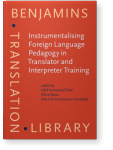Chapter 11
Do translators need a different knowledge of their target language?
Extrapolations from an empirical study of linguistic interference in English translations by native Spanish speakers
This chapter aims to identify areas in which students of translation can benefit from specific language teaching geared towards their needs as future translators who will normally be expected to translate from as well as into their second language. Drawing on data from translations by several hundred students at a Spanish university, it is shown that general English teaching as it is currently conceived is not sufficient to prepare these students for the job, mainly because they require specific knowledge and contrastive awareness to be able to produce linguistically, stylistically and formally correct translations of the written texts they will be confronted with as professional translators. The data allows us to distinguish several types of frequent mistakes caused by linguistic interference, providing insights into the specific language teaching needs of translation students and setting a starting point for establishing a cross-linguistically valid inventory of the most common types of interference-based errors in translation.
Article outline
- 1.Introduction
- 2.Translation into a non-native language (“reverse translation”)
- 3.Methodology
- 4.Typical errors
- 4.1Syntax: Mistakes regarding constituent order in complex sentences and non-canonical constructions
- 4.2Lexicon: Toponyms and other proper names
- 4.3Genre: Characteristic conventions of specific textual genres
- 4.4Punctuation
- 5.Conclusion
-
Notes
-
References
